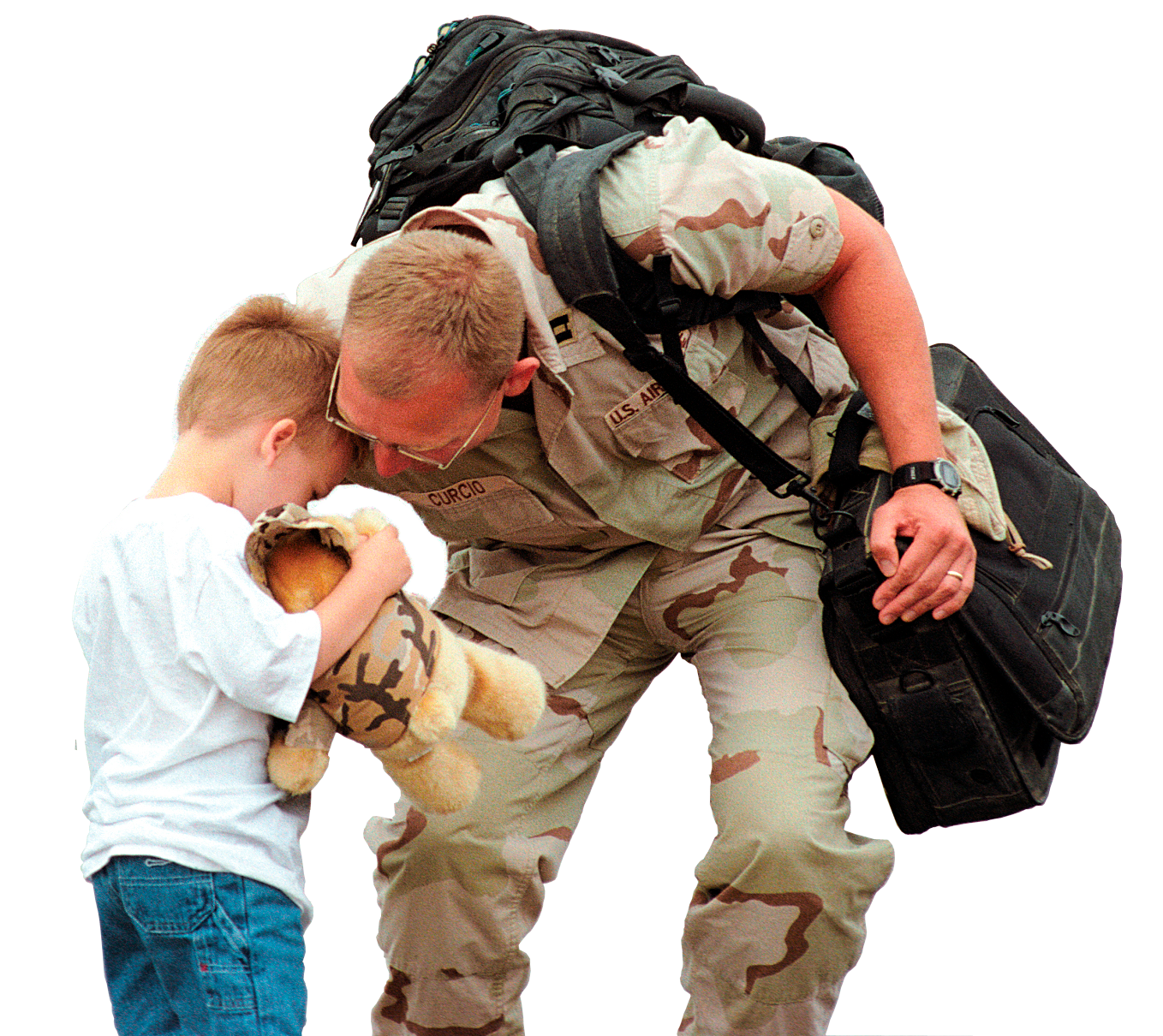Meet Your Military
- Details
- Hits: 2688
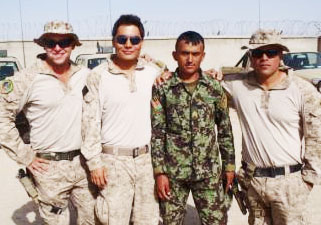 PHOTO: Marine Corps Sgt. Levi J. Slife, far left, a joint terminal air controller, poses with fellow U.S. Marines and an Afghan soldier in Afghanistan in 2012. Courtesy photo CAMP HANSEN, Japan – Marine Corps Sgt. Levi J. Slife is a talker. Slife loves to talk while he fixes his truck and motorcycle back home in Littleton, Colorado. His Marine buddies say he ran his mouth during a firefight in Afghanistan while enemy rounds were chipping away at brick walls inches above his head. His Marine comrades claim he talks like Usain Bolt runs. He talks because it’s his job -- he is a joint terminal attack controller, an instructor and a noncommissioned officer. Slife “is very talkative, which helps when he teaches because he’s a charismatic instructor who can hold a Marine’s attention,” said Marine Corps Staff Sgt. Robert H. Cheathem, a native of Jacksonville, North Carolina, and a JTAC with Company L, Battalion Landing Team 3rd Battalion, 5th Marines, 31st Marine Expeditionary Unit. “He can identify well with the Marines he’s teaching, and he’s very knowledgeable on the job, so he can speak eloquently when Marines ask questions.” Slife’s ability to speak clearly contributes immensely to his line of work when calling in close-air support or surface-to-surface bombardments on enemy positions.
PHOTO: Marine Corps Sgt. Levi J. Slife, far left, a joint terminal air controller, poses with fellow U.S. Marines and an Afghan soldier in Afghanistan in 2012. Courtesy photo CAMP HANSEN, Japan – Marine Corps Sgt. Levi J. Slife is a talker. Slife loves to talk while he fixes his truck and motorcycle back home in Littleton, Colorado. His Marine buddies say he ran his mouth during a firefight in Afghanistan while enemy rounds were chipping away at brick walls inches above his head. His Marine comrades claim he talks like Usain Bolt runs. He talks because it’s his job -- he is a joint terminal attack controller, an instructor and a noncommissioned officer. Slife “is very talkative, which helps when he teaches because he’s a charismatic instructor who can hold a Marine’s attention,” said Marine Corps Staff Sgt. Robert H. Cheathem, a native of Jacksonville, North Carolina, and a JTAC with Company L, Battalion Landing Team 3rd Battalion, 5th Marines, 31st Marine Expeditionary Unit. “He can identify well with the Marines he’s teaching, and he’s very knowledgeable on the job, so he can speak eloquently when Marines ask questions.” Slife’s ability to speak clearly contributes immensely to his line of work when calling in close-air support or surface-to-surface bombardments on enemy positions.
He must relay information as quickly as possible to support his Marines, and has to remember the procedures to do so. There’s a lot to remember and lives depend on it. Slife’s path to becoming a joint terminal attack controller began when he enlisted as a fire support man during the spring of 2007. A fire support man is trained to scout forward with an infantry unit and call in artillery or long distance indirect fire. He then became a joint fire observer and learned how to use a laser designator and how to “talk-on” close-air support during his second tour in Afghanistan in the summer of 2010. This combined knowledge allows the fire support man to direct attack aircraft underneath the supervision of a joint terminal attack controller, who is the chief designator of close-air support ordnance and has the final say with the pilot or gunner before they commit to an attack.
Read more: Meet Your Military: Marine Keeps Conversation Flowing
- Details
- Hits: 3538
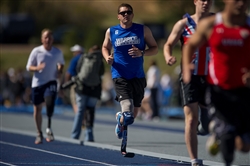 PHOTO: Air Force Capt. Ryan McGuire earns a gold medal in the 1,500-meter run at the 2012 Warrior Games at the U.S. Air Force Academy, Colo. McGuire won five medals at the 2012 Games to add to the three he won in the inaugural Warrior Games in 2010. Courtesy photo JOINT BASE LEWIS-MCCHORD, Wash. – In 2009, a young Air Force lieutenant in pilot training thought his dreams of flying in the Air Force were crushed after a recreational boating accident resulted in the loss of his right leg. Despite the accident, Capt. Ryan McGuire, now a 4th Airlift Squadron pilot, became the first airman to complete Air Force pilot training after losing a leg. He since has become a motivational speaker to airmen. The boating accident happened when McGuire was in pilot training at Laughlin Air Force Base, Texas. The boat McGuire was on was towing a float with a rope. The rope wrapped around McGuire's leg, fracturing his pelvis, dislocating his hip and cutting off the blood circulation to his leg. Six weeks later, McGuire's leg was amputated. "The days leading up to the amputation were overwhelming and depressing," McGuire said.
PHOTO: Air Force Capt. Ryan McGuire earns a gold medal in the 1,500-meter run at the 2012 Warrior Games at the U.S. Air Force Academy, Colo. McGuire won five medals at the 2012 Games to add to the three he won in the inaugural Warrior Games in 2010. Courtesy photo JOINT BASE LEWIS-MCCHORD, Wash. – In 2009, a young Air Force lieutenant in pilot training thought his dreams of flying in the Air Force were crushed after a recreational boating accident resulted in the loss of his right leg. Despite the accident, Capt. Ryan McGuire, now a 4th Airlift Squadron pilot, became the first airman to complete Air Force pilot training after losing a leg. He since has become a motivational speaker to airmen. The boating accident happened when McGuire was in pilot training at Laughlin Air Force Base, Texas. The boat McGuire was on was towing a float with a rope. The rope wrapped around McGuire's leg, fracturing his pelvis, dislocating his hip and cutting off the blood circulation to his leg. Six weeks later, McGuire's leg was amputated. "The days leading up to the amputation were overwhelming and depressing," McGuire said.
"The amputation was miserable. I was at the lowest of low." McGuire said his depression was compounded by the fact that he probably would not be allowed to fulfill his dream of completing pilot training in the Air Force. But when he began his rehabilitation program, he added, he began to realize his situation might not have been as dire as he thought it was. After his surgery, McGuire was waiting for a physical therapy appointment when a soldier asked him when he had lost his leg. "Last week," McGuire responded. McGuire said he was surprised when the soldier told him he had lost a leg the previous year. "Seeing him in uniform walking perfectly normal made me realize that being an amputee doesn't define me," the captain said. In addition to his rehabilitation, McGuire said, the support system of his family, friends and Air Force wingmen was a key part of his recovery.
Read more: Meet Your Military: Amputee Pilot Inspires Fellow Airmen
- Details
- Hits: 2032
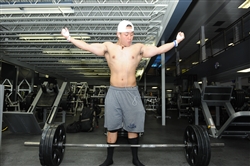 PHOTO: Air Force Airman 1st Class Benny Le prepares to perform a deadlift exercise, July 15, 2014, at a fitness club in Wichita, Kan. Le is training for a powerlifting competition in August. U.S. Air Force photo by Airman 1st Class David Bernal Del Agua MCCONNELL AIR FORCE BASE, Kan. – Twelve hours of patrolling on the graveyard shift drained his energy, but not his drive. The job was done, but the work wasn't. The airman steps through the fitness club doors with only one goal in mind: to achieve powerlifting superiority. He sees an empty bench press. He feels the grip of the iron bar covered with chalk powder, and the only sound he hears is the music through his headphones. In that moment, his new environment separates him from the rest of the world. Air Force Airman 1st Class Benny Le, 22nd Security Forces Squadron patrolman, powerlifts to stay fit, but the sport is more than just lifting heavy weights, he said. "Powerlifting is mostly mental," Le explained. "I try to clear everything in my mind, and I imagine myself as the Hulk, being able to lift whatever weight is in front of me." Le was first introduced to the sport that would improve his fitness, both physically and spiritually, by his first supervisor at F.E. Warren Air Force Base, Wyoming. "The first time I powerlifted, I loved it," Le said. "There were a lot of friendly people, and even those who didn't know me showed support. That really motivated and hyped me up for the meet." Bench pressing, deadlifting, and squatting soon became routine for Le. Although his first powerlifting competition was easy for him to do, he said, fitness was not always his thing.
PHOTO: Air Force Airman 1st Class Benny Le prepares to perform a deadlift exercise, July 15, 2014, at a fitness club in Wichita, Kan. Le is training for a powerlifting competition in August. U.S. Air Force photo by Airman 1st Class David Bernal Del Agua MCCONNELL AIR FORCE BASE, Kan. – Twelve hours of patrolling on the graveyard shift drained his energy, but not his drive. The job was done, but the work wasn't. The airman steps through the fitness club doors with only one goal in mind: to achieve powerlifting superiority. He sees an empty bench press. He feels the grip of the iron bar covered with chalk powder, and the only sound he hears is the music through his headphones. In that moment, his new environment separates him from the rest of the world. Air Force Airman 1st Class Benny Le, 22nd Security Forces Squadron patrolman, powerlifts to stay fit, but the sport is more than just lifting heavy weights, he said. "Powerlifting is mostly mental," Le explained. "I try to clear everything in my mind, and I imagine myself as the Hulk, being able to lift whatever weight is in front of me." Le was first introduced to the sport that would improve his fitness, both physically and spiritually, by his first supervisor at F.E. Warren Air Force Base, Wyoming. "The first time I powerlifted, I loved it," Le said. "There were a lot of friendly people, and even those who didn't know me showed support. That really motivated and hyped me up for the meet." Bench pressing, deadlifting, and squatting soon became routine for Le. Although his first powerlifting competition was easy for him to do, he said, fitness was not always his thing.
- Details
- Hits: 2088
 PHOTO: Air Force Senior Master Sgt. Floyd W. Atkins refuels a B-1B Lancer over Afghanistan, July 17, 2014. U.S. Air Force photo by Senior Airman Colin Cates SOUTHWEST ASIA – Air Force Senior Master Sgt. Floyd W. Atkins, a 340th Expeditionary Air Refueling Squadron boom operator, has reached 8,000 refueling hours in his career, a rare feat for a boom operator. "The milestone signifies the love for what I do," Atkins said. "Reaching the 8,000 hours means I have been blessed to maintain good health -- good enough to remain on flying status for 28-plus years." Atkins said he hopes to reach the 8,765 hour mark, which would equal one full year of flying time. “I think I will have to get a patch that says 1-50 since I will probably be 50 when I reach that mark," he added. But just like every other boom operator, he said, he had to start somewhere.
PHOTO: Air Force Senior Master Sgt. Floyd W. Atkins refuels a B-1B Lancer over Afghanistan, July 17, 2014. U.S. Air Force photo by Senior Airman Colin Cates SOUTHWEST ASIA – Air Force Senior Master Sgt. Floyd W. Atkins, a 340th Expeditionary Air Refueling Squadron boom operator, has reached 8,000 refueling hours in his career, a rare feat for a boom operator. "The milestone signifies the love for what I do," Atkins said. "Reaching the 8,000 hours means I have been blessed to maintain good health -- good enough to remain on flying status for 28-plus years." Atkins said he hopes to reach the 8,765 hour mark, which would equal one full year of flying time. “I think I will have to get a patch that says 1-50 since I will probably be 50 when I reach that mark," he added. But just like every other boom operator, he said, he had to start somewhere.
"The feeling as a young boom operator was one of amazement," Atkins said. "I couldn't believe the Air Force was letting me do this for a living. One of my first missions was refueling the Thunderbird just after arriving at my first duty station. It's got to be the greatest job ever." Now, he said, he has the privilege of seeing the new faces in the boom operator career field and relives some of the same feelings he had as a young boom. "Being a boom is special -- no two days are the same, and again it's a rush of excitement at times,” he said. “Now it's fun to watch a brand-new boom refuel and get excited, and see that same look on their face that I had over 20 years ago.” Early in his career, Atkins said, he never gave much thought to how many hours he had. “To me, I was just doing what I enjoyed and never worried about the hours," he explained. "Only recently has it become interesting as people are amazed by the number of hours I have logged."
Read more: Meet Your Military: Boom Operator Reaches 8,000-hour Milestone
- Details
- Hits: 1657
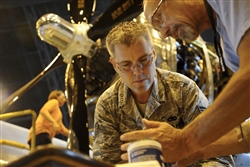 PHOTO: Air Force Tech. Sgt. Geoffrey Jensen places a cap on a fuel booster pump of a B-29 Superfortress he is restoring with other volunteers inside a Boeing hangar in Wichita, Kan., July 22, 2014. MCCONNELL AIR FORCE BASE, Kan. – As a child, he spent countless hours drawing aircraft from his World War II book collection, daydreaming about what it would like to be fly in one of them. The volunteers are restoring one of the last two B-29s to flying condition. U.S. Air Force photo by Airman 1st Class John Linzmeier Now, as an adult with 19 years of Air Force service, his aircraft dreams are still alive and are even more vivid as he spends much of his free time restoring one of the last flyable B-29 Superfortress bombers. Tech. Sgt. Geoffrey Jensen, 22nd Maintenance Group logistic resource management program noncommissioned officer in charge, became a volunteer for the “Friends of Doc” restoration project in March and has been hooked on helping ever since. Doc, a B-29 named after a character from the fairy tale "Snow White," was built in Wichita, Kansas, during World War II.
PHOTO: Air Force Tech. Sgt. Geoffrey Jensen places a cap on a fuel booster pump of a B-29 Superfortress he is restoring with other volunteers inside a Boeing hangar in Wichita, Kan., July 22, 2014. MCCONNELL AIR FORCE BASE, Kan. – As a child, he spent countless hours drawing aircraft from his World War II book collection, daydreaming about what it would like to be fly in one of them. The volunteers are restoring one of the last two B-29s to flying condition. U.S. Air Force photo by Airman 1st Class John Linzmeier Now, as an adult with 19 years of Air Force service, his aircraft dreams are still alive and are even more vivid as he spends much of his free time restoring one of the last flyable B-29 Superfortress bombers. Tech. Sgt. Geoffrey Jensen, 22nd Maintenance Group logistic resource management program noncommissioned officer in charge, became a volunteer for the “Friends of Doc” restoration project in March and has been hooked on helping ever since. Doc, a B-29 named after a character from the fairy tale "Snow White," was built in Wichita, Kansas, during World War II.
It has been parked inside a Boeing hangar next to McConnell Air Force Base, close enough for Jensen to do a little work during his lunch break, something he does frequently. “It’s like bringing history to life,” Jensen said. “There are a lot of people who have never even heard of this airplane. It’s the same model that dropped the atomic bomb and ended World War II, and it’s so cool that I get to be a part of that.” Working on an aircraft is nothing new to Jensen. He was a flightline crew chief for 18 years and has brought all of his experience with him to aid the restoration project. But he’s not the only one involved in the project who has military experience. “We’ve got a large number of veterans helping out here, including a 95-year-old,” said TJ Norman, volunteer manager. “It’s so nice having these Air Force guys over here, because all I have to do is show them what project we are working on, and they know exactly what to do.” The aircraft is being pieced together to resemble its original image with a few modifications for increased safety. Jensen said he has helped to implement modern avionics technologies while trying to maintain the aircraft’s originality.
Read more: Meet Your Military: Airman Helps to Restore B-29 Superfortress






